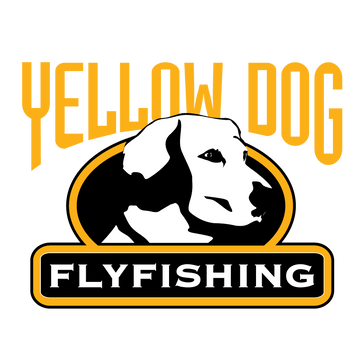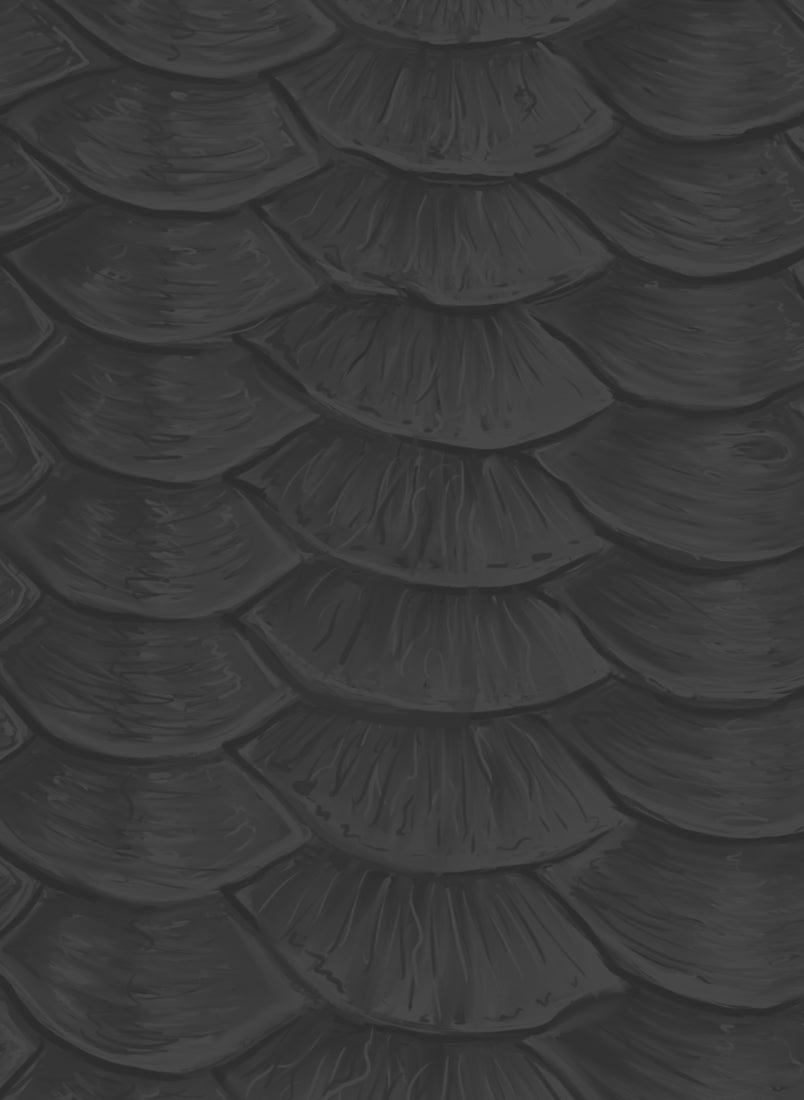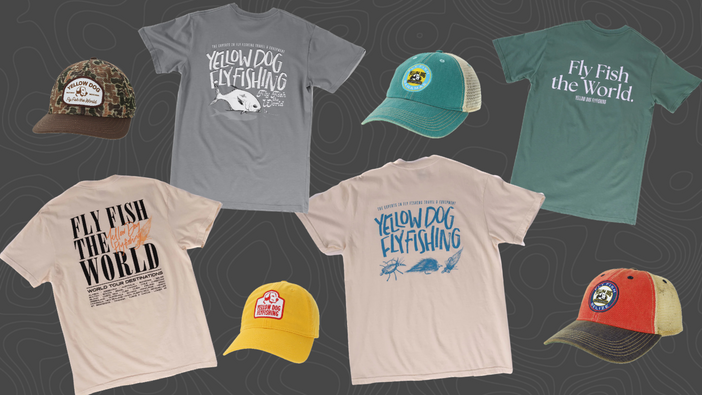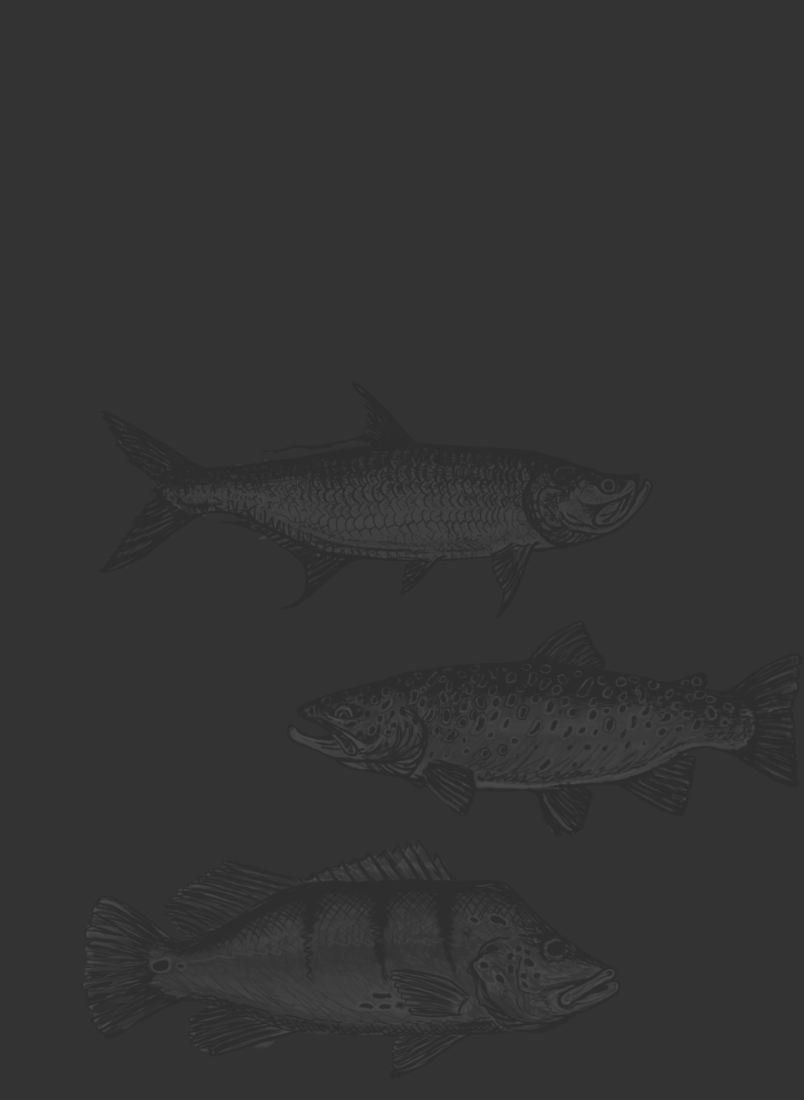There are countless effective bonefish flies out there, each with its time and place. Here, we've put together a collection of staple patterns that are proven across a range of global fisheries. Some of these flies have been fooling bonefish for over half a century and remain reliable anywhere the species is found. Others are must-haves for specific destinations—patterns that every local guide will expect to see in your fly box. But before diving into individual flies, let’s take a look at the key features that make a great bonefish fly.
Weight
Having the proper weight on a bonefish fly is the first and most important element to consider when selecting a fly.
Bonefish are naturally spooky, and the plop of an overly weighted fly can easily send them fleeing. On the other hand, what often triggers an eat isn’t actually the fly pattern itself, but the subtle puffs of sand or mud the fly kicks up while tracking along the bottom. Ultimately, you want a fly that is heavy enough to ride hook up and get down to the bottom without any unnecessary weight.
Stainless steel bead chain eyes are the most commonly used weight on bonefish flies. They’re light enough to avoid a heavy splash yet sufficient to keep the fly riding hook-point up. Bead chain excels in shallow flats—typically 8 to 20 inches of water—where most bonefish are encountered. Still, it’s wise to carry some core patterns with small to medium brass or lead dumbbell eyes. Heavier flies are a must when fishing deeper water, working drop-offs, or dealing with higher tides in search of larger fish.
At times, an unweighted fly can be the difference-maker. When casting to bonefish with their backs out of the water in ultra-skinny flats, go as light and sparse as possible. An unweighted fly is generally referred to as "blind," and can be the difference maker in very calm, shallow conditions.
Fly materials also play a role. Light, buoyant materials like rabbit strip help soften the entry of a fly and maintain a lifelike sink rate. On the other hand, materials like wool absorb water and become heavy, making them less suitable for shallow water scenarios.
Color
One of the most important factors when selecting a bonefish fly is matching its primary color to the habitat and substrate you're fishing over. As a general rule, choose a fly that mimics the color of the bottom—tan and white are consistently productive because they blend in with sand and mottled bottom, while olive is good over turtle grass flats. Long story short: Prey that fail to camouflage are quickly picked off, so you want to present something that is semi-realistic in coloration.
That said, there are exceptions. Some patterns, including certain variations of the iconic Crazy Charlie, incorporate bright colors like fluorescent pink or chartreuse. If you're having trouble drawing strikes with a flashy fly, try switching to something more subtle and natural.
Trigger Points
Trigger points are materials that entice a predator or gain their attention such as a bit of flash, rubber legs, or subtle hot spots. Krystal flash or mylar tubing is commonly used in bonefish flies for this purpose, imitating the light glinting off a glass minnow or translucent shrimp. Other hot spots can include the addition of an orange tuft of material tied at the hook bend to imitate an egg or roe sac, the use of hot tip rubber legs, or simply finishing your fly with a bright thread such as chartreuse or pink. These elements can aid in attracting a bonefish without seeming too unnatural.
Static Movement
Incorporating materials that move naturally in the water—even without stripping the fly—can make all the difference. Materials like rabbit fur, craft fur, arctic fox, and Finn raccoon are excellent choices, as they undulate and breathe underwater with little to no input from the angler and do a lot of the "hard work" for you.
While some fish will charge down a fly no matter what, more selective bonefish sometimes prefer minimal movement. In those cases, it's best to simply keep the slack out of your line and let the materials do the work! If you see the bonefish tip up on your fly, give your line a gentle strip set to set the hook.
Build a Diverse Box
Building a diverse selection of bonefish flies is essential for adapting to the various conditions you'll encounter on the flats. Varying weights allow you to present flies effectively in different depths and tidal stages. Having multiple sizes ensures you can scale down for wary, pressured bonefish or size up when targeting larger fish. A mix of patterns—including both shrimp and crabs—gives you the flexibility to switch tactics when fish get picky or conditions change.
+ Hand-Selected Bonefish Fly Assortment

Top Bonefish Flies
Below you will find a selection of the best bonefish flies in the world of destination angling (in no particular orer). Some of these flies will get it done everywhere you go, while others are must-have patterns specific to a destination.
1. Gotcha
Best For: Everywhere. Must have pattern for the Bahamas.
Arguably the most iconic bonefish fly ever tied, the Gotcha was first created by Jim McVay on Andros Island in the Bahamas. The story goes that the original prototype was tied using carpet fibers pulled from the floor of a local taxi cab on Andros. After some initial success, McVay refined the pattern using craft fur for the wing instead of taxi cab carpet. The fly earned its name from McVay’s guide on Andros, who would shout “Gotcha!” each time a bonefish ate the fly.
2. Spawning Shrimp
Best For: A favorite of many guides in the Yucatan and Cuba. Great for permit, too.
The Spawning Shrimp was built to mimic a shrimp releasing eggs—an easy, vulnerable target. It comes in a number of variations, including Peterson's Spawning Shrimp or those tied by Enrico Puglisi. It is deadly anywhere bonefish swim, and is an excellent crossover pattern for permit in the Caribbean and Indo-Pacific, and has been known to hook a triggerfish or two.

3. Christmas Island (CXI) Special
Best For: Christmas Island, Belize, Florida Keys, the Bahamas
Named for its birthplace, this fly is a workhorse. It is lightly dressed and borrows inspiration from the Gotcha. A guide-favorite throughout Belize and Christmas Island, the CXI Special comes in much smaller sizes than other popular patterns, all the way down to a size 10. Randall Kaufman designed the fly in the early days of fly fishing on Christmas Island, but it remains a productive pattern in fisheries around the world.
4. Veverka’s Mantis Shrimp
Best For: Everywhere
Bob Veverka originally designed the Mantis Shrimp for the flats of Andros Island, but it is a staple pattern worldwide. The fly closely mimics the natural appearance and movement of small mantis shrimp, a primary prey for bonefish, though it is also an excellent crossover pattern for permit.
Commonly sold in tan for fishing over sandy or mottled bottoms, it is also very effective in olive over turtle grass flats.

5. Squimp
Best For: Mexico, Seychelles
The Squimp is one of those flies that looks like a lot of things without being any one thing in particular. It has a naturally buggy profile, and the fly's signature splayed rubber legs at the eye of the hook make it irresistible to bonefish, while also very effective for permit. Anyone heading to fish in the Yucatan should have some squimps in their box in both bead chain and yellow lead eyes.
6. Crazy Charlie
Best For: Everywhere. Must have in the Bahamas.
First tied by Charlie Smith on Andros Island in the 1970s, the Crazy Charlie is the original modern bonefish fly, and is one of the first flies to popularize using bead chain eyes to effectively turn over a fly to prevent snagging the bottom.
Initially dubbed the "Nasty Charlie," the fly's success quickly spread and was later renamed the Crazy Charlie. This pattern revolutionized bonefishing and remains a staple in anglers' fly boxes worldwide after over half a century. If you're heading to the Caribbean, you need some of these in your box in a couple of different sizes.
+ Bahamas Gear Guide: Everything You Need
7. Bonefish Bitters
Best For: Belize & Honduras
Craig Mathews of Blue Ribbon Flies developed the Bonefish Bitters to mimic small crabs or urchins, particularly on turtle grass or atop coral. It was originally named the "Pop's Bonefish Bitters," after a legendary guide on Turneffe Atoll. If you're traveling to Turneffe, you have to have some bitters in your box for both bonefish and permit!
One element of note is the fly's epoxy head, a technique popularized in the 1970s and 80s to help flies sink quickly, seen in other patterns like the famous Mother of Epoxy. In modern fly tying, UV resin is often used as a quicker, ready-made substitute for traditional epoxy.
+ Belize Gear Guide: Everything You Need

8. Sili Legs
Best For: Belize, Mexico, Bahamas
Barry and Cathy Beck designed the Sili Legs fly to capitalize on lively movement and flash. It’s built around wiggling rubber legs and a simple shrimp-like profile, drawing heavy inspiration from the Gotcha. The Sili Legs is another one of those universal bonefish patterns you can take just about anywhere. If the fish are interested but won't commit, you can try shortening the legs or cutting them off for a super sparse fly in a pinch!
9. Pillow Talk
Best For: Seychelles, St. Brandon's Atoll, Australia
Wayne Haselau, a longtime guide in the Seychelles, designed the Pillow Talk to be a soft-landing, stealthy bonefish fly for the big bones that inhabit the atolls. While a bonefish-killer, Wayne has caught just about anything that swims in the Seychelles with it, including permit, milkfish, and even giant trevally (we do not recommend its use on GTs!). It is a very sparse fly, tied with krystal flash and a combination of white and chartreuse calftail. Less is definitely more when tying the Pillow Talk. If you're traveling to the Seychelles, you need these in your box!
+ Seychelles Gear Guide: Everything You Need
10. Bonefish Scampi
Best For: Bahamas, Mexico, Belize
Like many others, Henry Cowen's Bonefish Scampi owes a lot of its inspiration to the Gotcha -- but Henry substituted the traditional craft fur wing for a tan zonker strip. This small change may seem inconsequential, but the rabbit strip offers tons of movement, and was an immediate game changer for luring larger-than-average bones for Cowen. Originally fished on Andros, the Scampi has shown itself to be a dynamic and deadly fly in destinations around the world.

Honorable Mentions
-
Alphlexo - We have to list at least one dedicated crab pattern, and the alphlexo is one of those flies that is effective most everywhere it goes for any species that eats crabs. The key with the alphlexo is to strip very slowly to crawl the fly across the bottom, or simply maintain tension on your line and let the fly's profile do the hard work.
-
Borski's Bonefish Slider - Developed in the Florida Keys by Tim Borski, this is one of those old-school patterns that deserves its plaudits. It is a multipurpose fly, and is equally effective on redfish.
-
Bonefish Junk - Charlie Craven's Bonefish Junk could have easily made the list -- it is an incredibly effective pattern. Drawing characteristics from a gotcha and hints of spawning shrimp, the Bonefish Junk was originally tied to target Andros' larger bones, but quickly became a staple flats pattern all over.
-
Bunny Gotcha - Simple and effective, the bunny gotcha is a great fly for deeper sandy flats with plenty of attractive movement.
- Kwan - Is it a baitfish? Crab? Shrimp? It's all of the above. The fly was originally tied with legendary bonefisheries like Biscayne Bay in mind, and has since become a staple for the Southeastern U.S.A for both bonefish and redfish.
Final Thoughts
Across the world’s bonefish hotspots—whether it’s the white sand of the Bahamas, the turtle grass beds of Belize, the flats of the Yucatán, the vast Indian Ocean atolls, or the technical waters of the Florida Keys—having the right flies matters.
Each of these patterns brings something unique to the table, from the timeless simplicity of the Crazy Charlie to the more modern Spawning Shrimp. Pack a range of colors, sink rates, and sizes, and you’ll be ready for nearly any bonefish scenario you encounter across the globe.
And remember, the fly won't save a bad cast -- So practice, practice, practice.
Yellow Dog Team Favorites
"Having a variety of differently weighted flies and in a variety of colors is paramount to proper presentation when Bonefishing. Ensuring your fly is with in the feeding zone outweighs any other attribute of a fly and this is typically on the bottom of the flat. Bonefish are bottom feeders. Secondly, your fly should match the color of the flat, so a gotcha is a strong all-around fly because it’s reflective properties mimic the surrounding hues of the environment. I also gravitate towards the EP Spawning shrimp series in all sizes, weights, and colors. I also like small crabs that land softly for tailing fish or dead calm conditions." - Ian Davis, Co-Owner & Saltwater Program Director
"I like Veverka's Mantis for its versatility, especially in Belize. Its a great bonefish fly in all sizes, but I also have a lot of confidence in it should a permit make an appearance and I have to quickly make a shot." - Matt Kelsic, Belize/Honduras Program Director
"The pillow talk is my favorite bonefish fly for the Seychelles as its origins are from Alphonse Island and designed by one of the most passionate bonefish anglers I know. Wayne described the design as mimicking a small goby fish that is prolific on the sand flats which bonefish enjoy eating, and its sparse design with the calf tail wing allow to fish it in the skinniest of water. The fact that is also is very reminiscent of the classic chartreuse and white clouser always give me a boost of confident as what fish doesnt like that color combo!" - Alec Gerbec, Seychelles Program Director
"My favorite pattern is the Veverka's Mantis Shrimp. I feel that I could take a box of these flies in various sizes and weights anywhere and be successful. Days where the fish are being a bit more tight-lipped, this fly has less flash to spook the wary fish. The rubber legs are sufficient to bring attention without being overstimulating." - Josh Callihan, Bahamas Program Director
"The mantis. I like it because its lifelike movement and realistic profile closely match natural prey in the Yucatan. Its tan color and soft material make it effective in both clear and stained water, plus it matches the seafloor well." - Sam Mebane, Mexico/Europe Program Director
Related Articles:




























